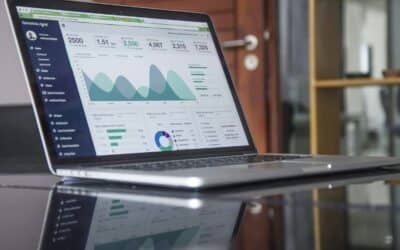“Freedom day” has happened, and lockdown is behind us, with all businesses free to open and shoppers free to browse their favourite high street and beyond. So what does that mean for businesses that use ecommerce, are mostly ecommerce-based, or do all their trade online?
Here are four things you need to consider before making any strategic post-lockdown decisions.
Bricks and mortar locations are still important
Businesses often think in terms of ‘online’ and ‘offline’ as though they are separate, but often in a customer’s mind they are not. Most individuals want a convenient, competitively-priced place to shop and the online-offline distinction is less important.
An ecommerce element will boost the footfall of an organisation’s physical locations. This is because the internet provides a great way to begin research, but often potential customers prefer to talk to and ask questions of other humans, and get tactile with products. A common way to shop in modern times is to see something online, then go check it out in person.
At the same time, physical locations drive up web traffic too. This is largely because of their visibility, as a well-branded location acts as an advertising board. A real-world presence will raise awareness of a brand’s existence, which a potential customer can research later at their convenience. And, when we browse online, familiar names tend to feel more trustworthy.
What you can do: While there will be many discussions in the months and years to come debating ecommerce versus physical locations, if you have both, it’s best to consider them as a whole – more than the sum of their parts – and use each to benefit the other.
Customers’ needs have changed
Shoppers are much more savvy than just a few years ago, with a year of being forced to shop online acting as a fast-track education in ecommerce for many.
Brand used to be king, and is still important, but many more people are willing to look deeper than brand names. Marketplaces (Amazon, eBay) and comparison sites (Google Shopping) make bargain-hunting much simpler. It’s just a few clicks, rather than walking (or driving) from shop to shop.
An online presence can also be used to supply much more information than could reasonably be delivered in-person, such as videos, tutorials, manuals and in-depth technical articles.
Perhaps the most important of these is customer reviews which, while imperfect, put a wealth of impartial information at a user’s fingertips. A stellar brand is not worth nearly as much if it sits alongside endless one-star reviews. Similarly, a clutch of five-star reviews can put a smaller but lesser-known brand right in among more established names.
What you can do: Update your marketing know-how to ensure you understand what customers want. And make sure you’re making the most of sites such as TrustPilot, which collect and display user reviews and add to your credibility.
We don’t know what the new normal is yet
For all the talk of the end of lockdown, nobody actually knows with any degree of certainty what the ‘new normal’ will look like. Ecommerce boomed when shops were forced to close, and the high street has begun a resurgence with shoppers excited to be allowed outside of their homes for the first time in more than a year.
But are busy shops a sign of things to come or a short-term over-correction? We just don’t know, because at the same time that the supermarket Asda is reporting a decline in online orders, clothing retailer Boohoo is posting its best-ever results and predicting further growth to come.
What you can do: The best thing to do is avoid any dramatic changes until we have a clearer picture of current and future trends. The worst thing you could do would be to pull all of your online marketing spend and to invest in offline methods. Firstly, you’ll lose all the capital already built and take several steps back should you choose to resume it in the future. And second, online spends still boosts real-world footfall, as described above.
The Golden Quarter is just around the corner
We will cover this in more detail soon, but it’s important to factor in the Golden Quarter into your short-term plans. These are the three months towards the end of the year when online sales are at their highest.
It covers Black Friday, Cyber Monday and the run-up to Christmas, and the consumer spending is astronomical, with this year’s potential higher than ever before.
While the long-term future is difficult to predict, this is one short-term event worth preparing your marketing, supply chain, inventory and logistics for.
What you can do: No matter which way customer behaviour trends over the coming months and years, there is no doubting that this year’s Golden Quarter will be huge. So don’t forget to maintain your investment in your online presence, as these are the months where it really pays off.
Discuss Your Project With Us
You can either give us a call on 01254 279998
Or complete the contact form below and a member of our team will call you back.


